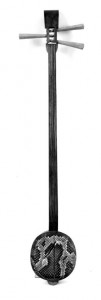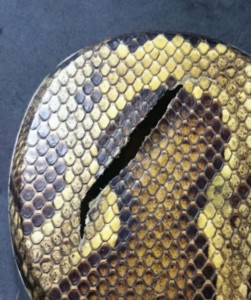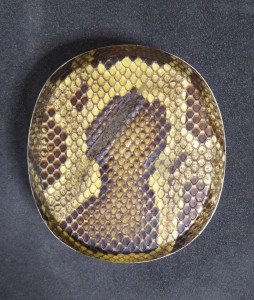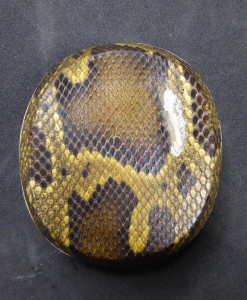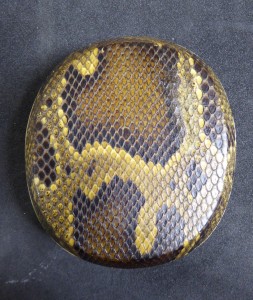One of the MIMEd instruments that went under conservation treatment this month by
conservator Jonathan Santa Maria Bouquet is a Chinese sanxian (MIMEd 437). The instrument, played both as a solo or orchestral instrument in Chinese classical music, is a plucked instrument with three strings. This sanxian was made in the mid-nineteenth century and was collected by John Donaldson, the founder of the Music Classroom Museum of Edinburgh University, and has been part of the University’s collection since before 1872.
An interesting element of sanxian construction is that the front and back of the body are made of snake skin – often that of a python. Although visually stunning, this material is susceptible to damage. Unfortunately changes in relative humidity over the years has caused the skin of the back and front of our sanxian to stretch resulting in tears.
To treat this instrument Jonathan used a technique he recently learned from a workshop given by Caroline Scharfenberg, a rare book conservator, which took place at the conservation studio of the Main Library. The technique is known as Japanese paper toning and it involves the use of Japanese paper to reinforce torn materials. The paper is then coloured using natural pigments to match the original material resulting in an inconspicuous repair. In the case of the sanxian Jonathan reinforced the tears in the snake skin, applying Japanese paper to the inside of the instrument. He then toned and texturized the paper to match that of the snake skin.
Although the tears are still visible, this treatment has made the damage less noticeable and more stable. Now the instrument is ready for display in the redeveloped St Cecilia’s Hall.
